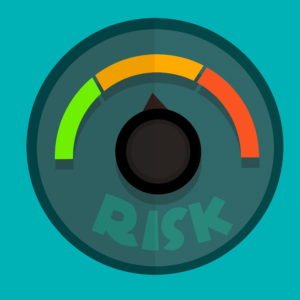We will always be exposed to different threats around us in our environment. In the world of business, such threats or risks are called “business risks”. These could include operational and liquidity risk, financial risk, economic risk, market risk, compliance risk and reputational risk. In order to survive and thrive, it is essential for a company to analyse, evaluate and minimize exposure to such risks. This is why the importance of risk management process cannot be undermined. This process should be at the core of any strategic management plan.
What is Risk Management
The process of minimising different threats to an organization’s capital and resources is known as risk management. An entity may be exposed to a threat for a variety of reasons, such as financial dealings, legal and compliance responsibilities, environmental disasters etc. By having a risk management process in place, the organization would be able to identify and assess the threat in order to respond appropriately. The process involves:
- identifying risks to business operations
- determining the probability of the occurrence of an event
- planning the strategy to react appropriately
- implementing a system to cope with ramifications
- assessing the effectiveness of risk management strategies and controls
Risk analysis involves identification of potential risks and the evaluation of their impact. However, this can be difficult since it requires precise data such as project plans, financial data, marketing projections, and any other relevant information. It is, nevertheless, an important planning tool that can save time, money, and reputation.
The results of risk analysis allow an action plan to be developed beforehand if something goes wrong. They can also help decide whether one should proceed with a certain project, based on the risk appetite. Risk management process can also help employees to improve safety standards and prevent equipment or technological failure or loss due to theft. It can also let them plan for staff absences or any other disaster, and be prepared for any uncertainty.

Categories of Risk
Systematic Risks
They affect the entire market, not just one particular entity and they can usually not be avoided. They can arise due to factors such as changes in government policies or taxation laws, global security threats, or other economic variables.
Unsystematic Risks
These risks are unique to an entity. They are mostly avoidable and can result from factors like non-compliance, fraud, research and development failures, poor marketing strategies and failed branding.
Evolution of Risk Management
Traditionally, organisations used to rely on a narrow approach. Risk managers were assigned specific tasks like protecting the property and their employees from a known threat. In recent years, though, the risk management function has greatly evolved and uses a more holistic approach. Nowadays, the focus has shifted from individual risk management to minimize losses towards “Enterprise Risk Management” that understands risks across an organsiation. Senior executive roles, such as Chief Risk Officer (CRO), now play an integral role in strategy by ensuring a balance between risk appetite and risk tolerance of a business.

The digital age, which has brought about digitalisation of company processes as well as growth in digital commerce, has also introduced new risks. Cyber security is now one of the top priorities of many companies. Organisations are now increasingly investing to protect their confidential data and intellectual property, and to avoid breaches of privacy.
In addition, the risk management function has also been propelled toward unprecedented change post-pandemic, like many other areas of business. As a result of the pandemic, risk managers have realized that they need to focus more on strategic, emergent, and disruptive risks. More than ever, they now have to focus on developing a resilient organization that can face uncertainty.
So what is the future outlook of the risk management function? The importance of risk management process is only going to increase! COVID-19 reminded us that some external risks cannot be avoided. So many businesses had to permanently close or apply for bankruptcy. Even when the economy started to open up, many businesses continued to function at a loss. Organisations cannot exclude the possibility of a similar or another future catastrophe. If the risk environment of an organization is not well analysed or managed, it would be exposed to more fragility than called for. As they say in nature, it is about survival of the fittest. So businesses have to ensure that they stay fit by managing their risk profiles.







